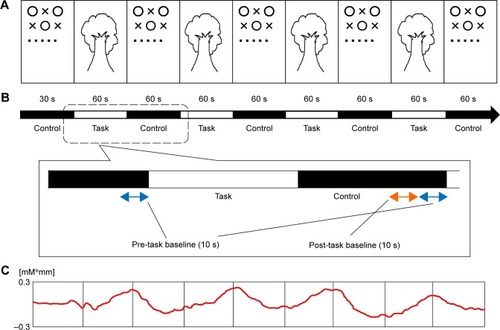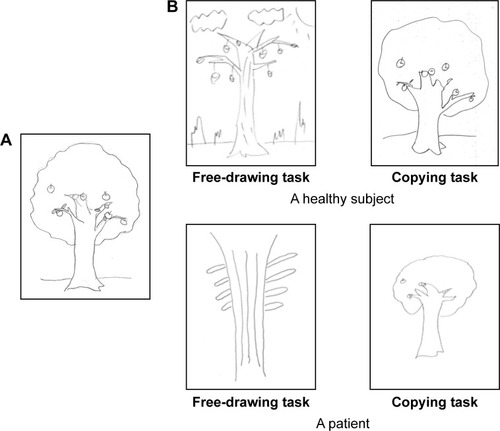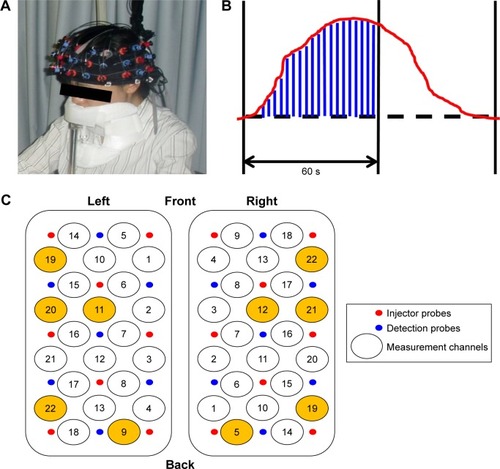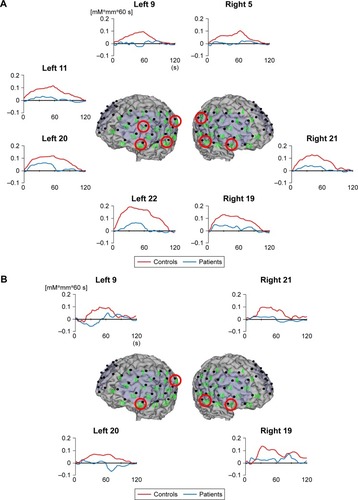Figures & data
Table 1 Demographic and clinical characteristics of controls and patients
Figure 1 Task design.

Figure 2 Examples of tree-drawings.

Figure 3 NIRS measurement and analysis.
Abbreviations: ROI, region of interest; NIRS, near-infrared spectroscopy; [oxy-Hb], oxygenated hemoglobin.

Figure 4 Average waveforms in the region of interest where significant differences were observed between controls and patients.

Figure 5 δ[oxy-Hb] in regions showing significant differences in groups or conditions.
Abbreviation: [oxy-Hb], oxygenated hemoglobin.
![Figure 5 δ[oxy-Hb] in regions showing significant differences in groups or conditions.](/cms/asset/7217275c-bdfc-4272-9df0-e67b6eaa9395/dndt_a_159984_f0005_c.jpg)

![Figure 6 Scatter diagrams of regions showing significant correlations between δ[oxy-Hb] and Positive and Negative Symptom Scale scores.](/cms/asset/ffc15096-f1d9-4470-8ea3-eb2d2b9b55f3/dndt_a_159984_f0006_b.jpg)